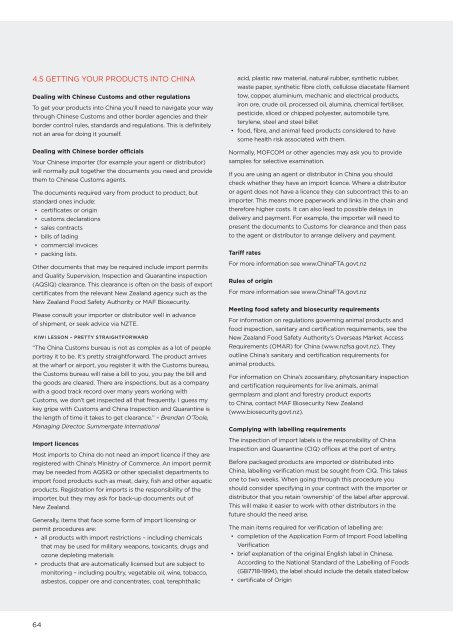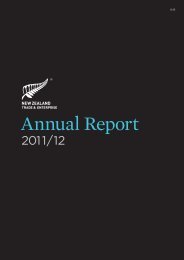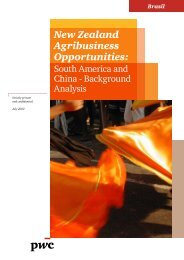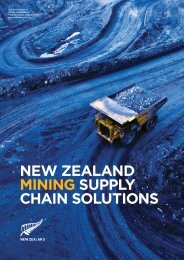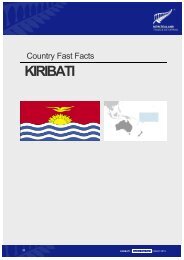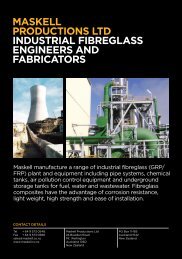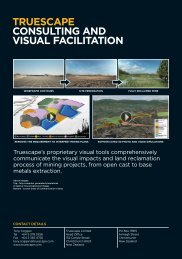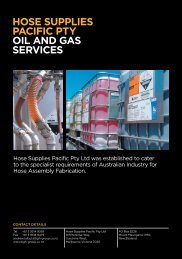Navigating China Guide (2012) - New Zealand Trade and Enterprise
Navigating China Guide (2012) - New Zealand Trade and Enterprise
Navigating China Guide (2012) - New Zealand Trade and Enterprise
Create successful ePaper yourself
Turn your PDF publications into a flip-book with our unique Google optimized e-Paper software.
4.5 GETTING YOUR PRODUCTS INTO CHINA<br />
Dealing with Chinese Customs <strong>and</strong> other regulations<br />
To get your products into <strong>China</strong> you’ll need to navigate your way<br />
through Chinese Customs <strong>and</strong> other border agencies <strong>and</strong> their<br />
border control rules, st<strong>and</strong>ards <strong>and</strong> regulations. This is definitely<br />
not an area for doing it yourself.<br />
Dealing with Chinese border officials<br />
Your Chinese importer (for example your agent or distributor)<br />
will normally pull together the documents you need <strong>and</strong> provide<br />
them to Chinese Customs agents.<br />
The documents required vary from product to product, but<br />
st<strong>and</strong>ard ones include:<br />
• certificates or origin<br />
• customs declarations<br />
• sales contracts<br />
• bills of lading<br />
• commercial invoices<br />
• packing lists.<br />
Other documents that may be required include import permits<br />
<strong>and</strong> Quality Supervision, Inspection <strong>and</strong> Quarantine inspection<br />
(AQSIQ) clearance. This clearance is often on the basis of export<br />
certificates from the relevant <strong>New</strong> <strong>Zeal<strong>and</strong></strong> agency such as the<br />
<strong>New</strong> <strong>Zeal<strong>and</strong></strong> Food Safety Authority or MAF Biosecurity.<br />
Please consult your importer or distributor well in advance<br />
of shipment, or seek advice via NZTE.<br />
KIWI LESSON – PRETTY STRAIGHTFORWARD<br />
“The <strong>China</strong> Customs bureau is not as complex as a lot of people<br />
portray it to be. It’s pretty straightforward. The product arrives<br />
at the wharf or airport, you register it with the Customs bureau,<br />
the Customs bureau will raise a bill to you, you pay the bill <strong>and</strong><br />
the goods are cleared. There are inspections, but as a company<br />
with a good track record over many years working with<br />
Customs, we don’t get inspected all that frequently. I guess my<br />
key gripe with Customs <strong>and</strong> <strong>China</strong> Inspection <strong>and</strong> Quarantine is<br />
the length of time it takes to get clearance.” – Brendan O’Toole,<br />
Managing Director, Summergate International<br />
Import licences<br />
Most imports to <strong>China</strong> do not need an import licence if they are<br />
registered with <strong>China</strong>’s Ministry of Commerce. An import permit<br />
may be needed from AQSIQ or other specialist departments to<br />
import food products such as meat, dairy, fish <strong>and</strong> other aquatic<br />
products. Registration for imports is the responsibility of the<br />
importer, but they may ask for back-up documents out of<br />
<strong>New</strong> <strong>Zeal<strong>and</strong></strong>.<br />
Generally, items that face some form of import licensing or<br />
permit procedures are:<br />
• all products with import restrictions – including chemicals<br />
that may be used for military weapons, toxicants, drugs <strong>and</strong><br />
ozone depleting materials<br />
• products that are automatically licensed but are subject to<br />
monitoring – including poultry, vegetable oil, wine, tobacco,<br />
asbestos, copper ore <strong>and</strong> concentrates, coal, terephthalic<br />
acid, plastic raw material, natural rubber, synthetic rubber,<br />
waste paper, synthetic fibre cloth, cellulose diacetate filament<br />
tow, copper, aluminium, mechanic <strong>and</strong> electrical products,<br />
iron ore, crude oil, processed oil, alumina, chemical fertiliser,<br />
pesticide, sliced or chipped polyester, automobile tyre,<br />
terylene, steel <strong>and</strong> steel billet<br />
• food, fibre, <strong>and</strong> animal feed products considered to have<br />
some health risk associated with them.<br />
Normally, MOFCOM or other agencies may ask you to provide<br />
samples for selective examination.<br />
If you are using an agent or distributor in <strong>China</strong> you should<br />
check whether they have an import licence. Where a distributor<br />
or agent does not have a licence they can subcontract this to an<br />
importer. This means more paperwork <strong>and</strong> links in the chain <strong>and</strong><br />
therefore higher costs. It can also lead to possible delays in<br />
delivery <strong>and</strong> payment. For example, the importer will need to<br />
present the documents to Customs for clearance <strong>and</strong> then pass<br />
to the agent or distributor to arrange delivery <strong>and</strong> payment.<br />
Tariff rates<br />
For more information see www.<strong>China</strong>FTA.govt.nz<br />
Rules of origin<br />
For more information see www.<strong>China</strong>FTA.govt.nz<br />
Meeting food safety <strong>and</strong> biosecurity requirements<br />
For information on regulations governing animal products <strong>and</strong><br />
food inspection, sanitary <strong>and</strong> certification requirements, see the<br />
<strong>New</strong> <strong>Zeal<strong>and</strong></strong> Food Safety Authority’s Overseas Market Access<br />
Requirements (OMAR) for <strong>China</strong> (www.nzfsa.govt.nz). They<br />
outline <strong>China</strong>’s sanitary <strong>and</strong> certification requirements for<br />
animal products.<br />
For information on <strong>China</strong>’s zoosanitary, phytosanitary inspection<br />
<strong>and</strong> certification requirements for live animals, animal<br />
germplasm <strong>and</strong> plant <strong>and</strong> forestry product exports<br />
to <strong>China</strong>, contact MAF Biosecurity <strong>New</strong> <strong>Zeal<strong>and</strong></strong><br />
(www.biosecurity.govt.nz).<br />
Complying with labelling requirements<br />
The inspection of import labels is the responsibility of <strong>China</strong><br />
Inspection <strong>and</strong> Quarantine (CIQ) offices at the port of entry.<br />
Before packaged products are imported or distributed into<br />
<strong>China</strong>, labelling verification must be sought from CIQ. This takes<br />
one to two weeks. When going through this procedure you<br />
should consider specifying in your contract with the importer or<br />
distributor that you retain ‘ownership’ of the label after approval.<br />
This will make it easier to work with other distributors in the<br />
future should the need arise.<br />
The main items required for verification of labelling are:<br />
• completion of the Application Form of Import Food labelling<br />
Verification<br />
• brief explanation of the original English label in Chinese.<br />
According to the National St<strong>and</strong>ard of the Labelling of Foods<br />
(GB7718-1994), the label should include the details stated below<br />
• certificate of Origin<br />
64


